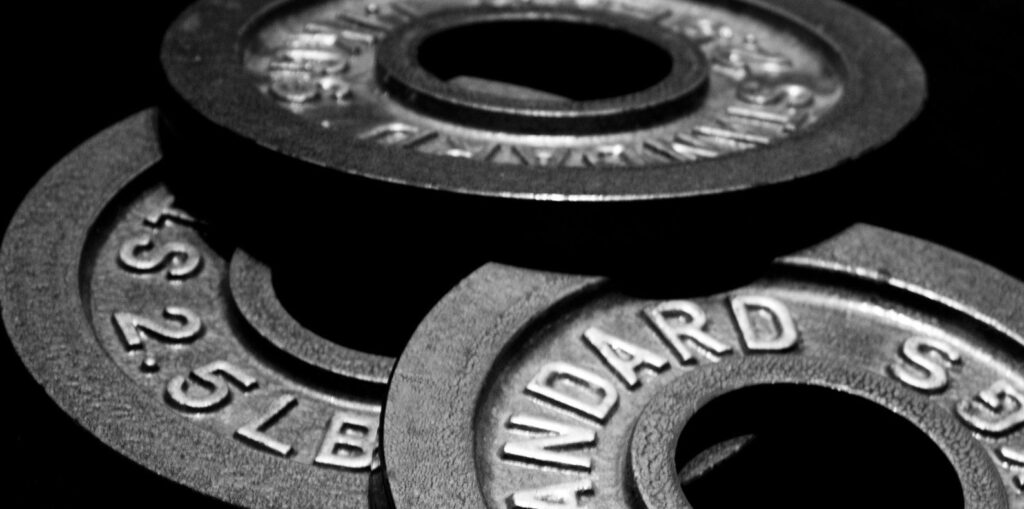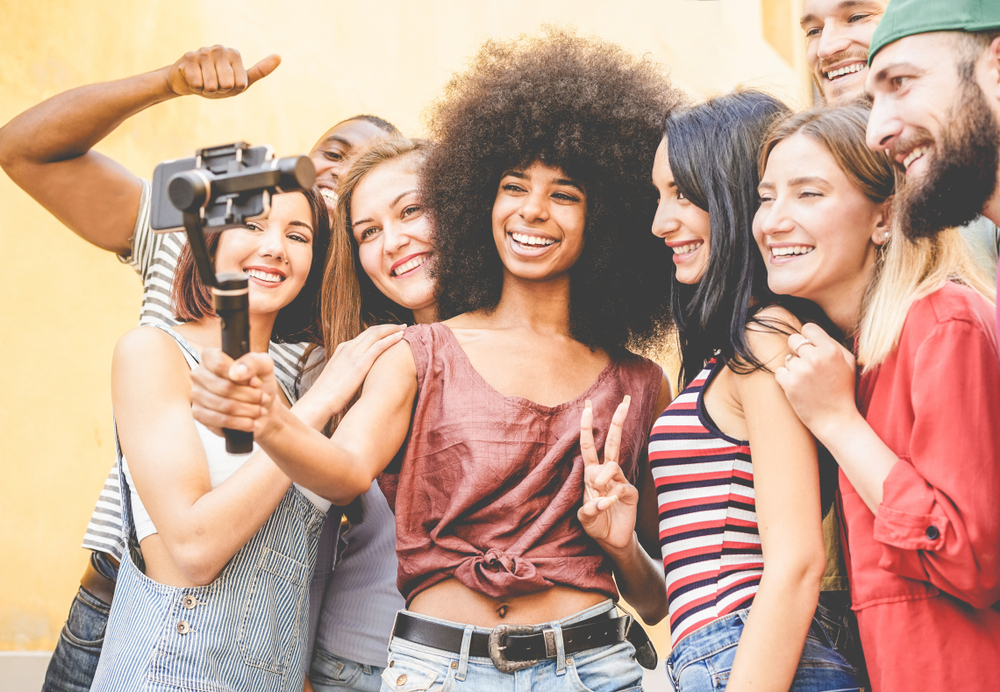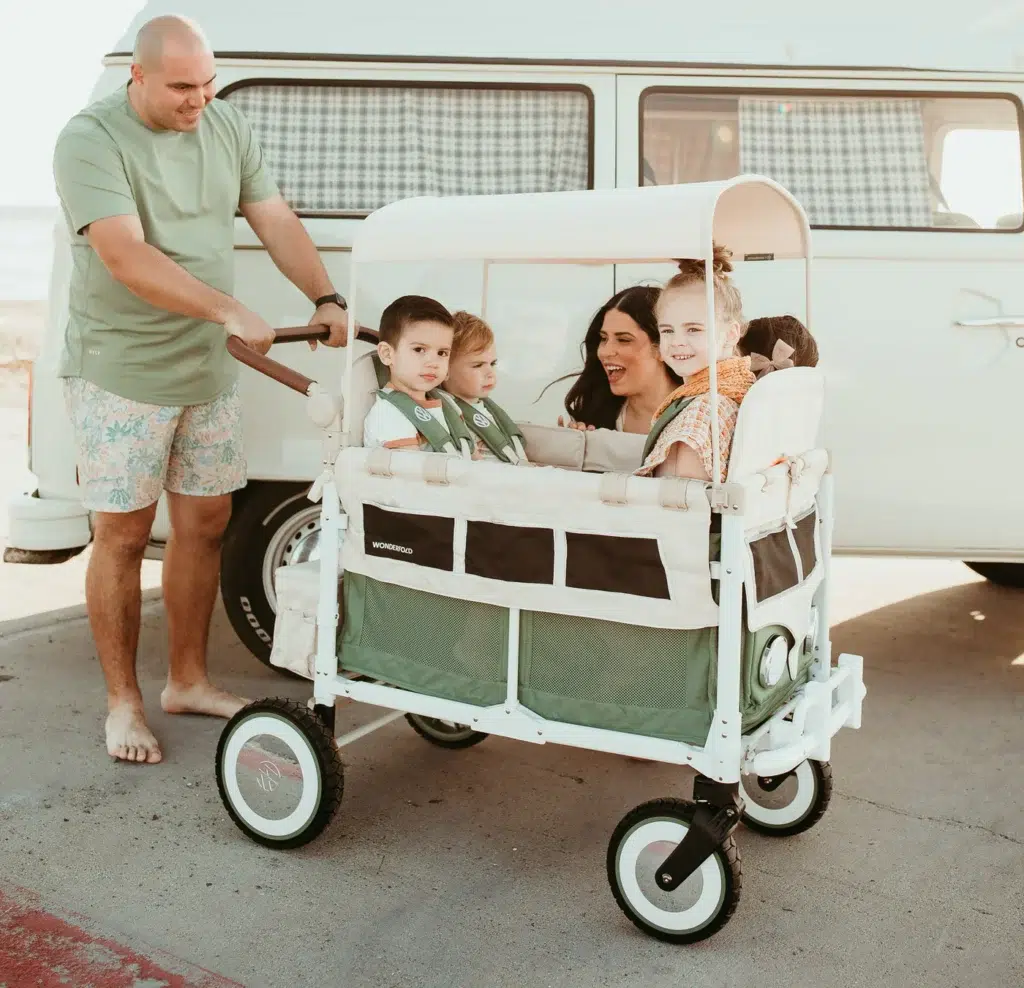Our team has helped hundreds of brands generate tens of millions of dollars through how to create brand ambassador programs over the last four years. The large volume of programs has enabled us to analyze the success factors of a campaign.
The most successful programs generating 20%+ of total brand revenue are executing well in the following areas:
- Investing time into growing a community around the brand
- Aggressively recruiting new ambassadors
- Providing instructions on how to create great photos and engaging content
- Creating fun and authentic ambassador activities
- Offering rewards that are valued by the ambassador, while also driving business goals such as increasing AOV and purchase frequency, clearing out old inventory, etc
By the time you finish this playbook you are going to understand the tactics and strategies to create an ambassador program with significant impact on your brands total revenue and how to avoid the most common program killers along the way.
Playbook Contributor Noelle Wilson @ Skirt Sports
SkirtSports.com’s community manager Noelle Wilson has grown SkirtSport’s ambassador program from the ground up. In February 2019 Noelle’s program saw 3,371 social posts generating 374 new customer referrals. Each new Skirt Sports customer has an LTV of hundreds of dollars a year.

Playbook Contributor Nolan Heyer @ Kaged Muscle
Nolan Heyer, marketing manager at Kaged Muscle recently launched and scaled his program to 400 ambassadors and in October 143 ambassadors created 730 social posts, generating 209 new customer referral sales. Each new Kaged Muscle customer has an LTV hundreds of dollars a year.
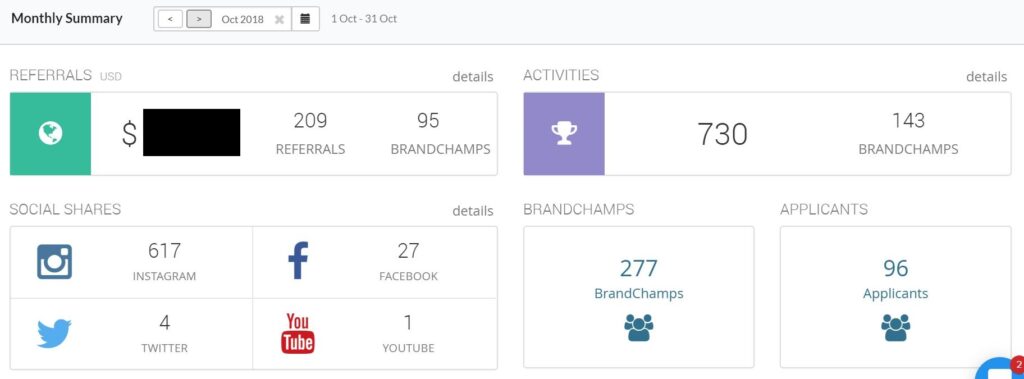
Impact of a Successful Ambassador Program
The #1 reason brands create ambassador programs is to generate more measurable referral revenue, but this is only one of many benefits a well ran program at scale creates for brands.
Increased 3rd party marketplace reviews. Your ambassadors are your brands #1 fan, and often times they’ll do you a favor without any compensation or reward. When you are launching a new product on a 3rd party platform, ask your ambassadors to make a purchase and leave a review, you’ll be surprised how many of your ambassadors will help for free.
“Our marketplace revenue increased in line with the number of verified customer reviews”
Increased brand affinity. Increasing brand affinity with your customers leads to increases in purchase frequency and life time value. Ambassador programs enable your community to recruit new community members, and your community allows you to retain these customers longer.
“If your friends use Kaged Muscle supplements, you’ll use Kaged Muscle too, and customers that are engaged in our community are less likely to leave us for competitors.”
Increased customer LTV. Brand Ambassadors spend more, after factoring in rewards and discounts, than regular customers. For many brands this can be 3-5x times more. If this is true for your brand, and it likely is, ambassadors with low social reach are still valuable to your brand.
“Once we figured out how much more our ambassadors spend, we scaled our program as fast as we could” – Noelle Wilson
Increased earned media. Earned media is free exposure for your business, increases credibility, and creates a moat for your brand that your competitors have to pay to achieve.
“Our ambassadors have generated 70,000 tagged Instagram photos. Our competitors are spending millions to reach the same number of women our ambassador program reaches.” – Noelle Wilson
Decreased ad spend. Many brands are dependent on paid media. There is a correlation between building an engaged ambassador community that is creating and sharing thousands of pieces of user generated content and being able to decrease your overall ad spend, because you are reaching the same number of consumers with the help of your ambassadors.
“The cost to match our reach costs hundreds of thousands of dollars a year in ad spend. ” – Noelle Wilson
Decrease in content production costs. Producing brand content requires hundreds of dollars per photography session. High quality user generated content is not only more authentic, but it’s free.
Ambassador Programs Versus Influencer Campaigns
Influencer marketing is expected to hit $10B in 2020, up from only $2B in 2017. But influencer marketing is only one piece of a broader category called relationship marketing which encompasses influencer marketing, ambassador programs and affiliate programs.
The core differences between influencer campaigns and brand ambassador programs are:
-
- Loyalty. Brand Ambassadors are your brands most loyal and engaged customers. These people are your brand’s biggest fans and have integrated your brand and products into their identity. Influencers tend to be hired guns who might promote your competitor the next day.
- Cost. Brand Ambassadors generally work for rewards – discounted products, free products, etc versus influencers who primarily work for dollars.
- Size of social audiences. Ambassadors are generally regular people with regular people social audiences (not always!), think nano influencer. Influencers are categorized by a much larger social following, however trust in large influencers is falling, and more and more brands are turning to micro and nano influencers.
- Length of participation. Ambassadors programs are measured in months and years, while influencer campaigns are typically one & done, or a short series of posts. However, this is changing. We polled top influencer marketing specialists on the tactics they dropped in 2019 and the #2 most common answer was dropping short influencer campaigns in favor of longer term promotions
- Scale. Due to the lower social reach of brand ambassadors, brands need to recruit hundreds or thousands of brand ambassadors to make the impact they need.
The most common response in our survey of influencer marketing specialists is a shift away from mega influencers to micro and nano influencers, and extending campaigns to weeks or months, coincidentally these are the core attributes for a brand ambassador program.
“Working with influencer on one off campaigns, we will be taking a more long term ambassador approach instead of one off campaigns with one influencer, one time.” – Chris Gonzalez, CMO @ NeoReach
Want to know what else top influencer marketing specialists are changing in 2019? Check out the full article.
Is Your Brand Ready For An Ambassador Program?
This section will help you figure out whether a brand ambassador program can generate a meaningful percentage of your brand’s total revenue.
Some brands are simply not a good fit for ambassador programs due to the nature of their products, and some brands haven’t achieved the scale they need to recruit and convert hundreds or thousands of engaged customers into ambassadors.
Dedicated Marketing Manager
The brands with the best outcomes have a team member focused on growing social community and building the ambassador program. Founders that are managing the rest of the business, and trying to grow their ambassador program aren’t setup for success, and should invest their limited time in growing their brand and building an engaged community of customers.
Number of Customers
Brands that have the most successful outcomes have at least 1,000 customers to recruit ambassadors from. An ambassador with a normal social reach will generate on average 5 – 20 referral sales per year. If you recruit 5% of your 1,000 person customer base into active and engaged ambassadors, you can expect to generate 250 – 1,000 new customer referral purchases per year. In addition to ambassadors generating a higher LTV.
Brands that are too small will see a limited ROI on ambassador programs, and should focus their limited marketing budget into growing revenue, customer base, and engaged customer community before investing into an ambassador program.
Authenticity
If you are a dropshipper, or don’t have a real, authentic mission or ethos, you’re going to have an uphill battle creating a community around your brand, and you won’t have a pool of customers that love your brand to recruit ambassadors from.
Verticals That Work
The verticals that see the most success with ambassador programs make products that their customer’s integrate into their identity, and become a part of how they communicate themselves to the world.
- Health / fitness brands
- Accessories brands
- Apparel brands
- Political brands
- Brands in regulated verticals like cannabis, CBD, e-cigarettes & firearms
- And many other CPG verticals
Verticals That Don’t Work
Other verticals will have a harder time creating and growing an ambassador program because their products are not tied to their customers identity:
- Commodity products
- Boring products
- No repeat purchases
- Generic drop shipped products
- Products that are embarrassing to purchase (think erectile dysfunction)
There is nothing wrong with these verticals, but they should focus their marketing budget into other acquisition channels.
Regulated Verticals
Regulated verticals such as CBD, cannabis, e-cigarettes, and firearms that can’t leverage paid advertising benefit greatly from engaged customer communities and ambassador programs. Fortunately these verticals tend to have very passionate customers with strong brand preferences.
Funneling Your Customers Into Your Community
You can’t build a customer community with one to many communication channels like newsletters and Facebook Pages, you need to provide a platform for your customers to interact together, and build relationships with each other. Right now the defacto platform for creating and growing communities is Facebook Groups.
Posts from Facebook groups your members are active in appear at a very high rate in the news feed, giving brands that own communities much more reach than they can create organically from their Facebook Page.
Link to your Facebook group everywhere
- Send a newsletter to all of your prior customers
- In your transnational emails
- In the footer of all of your newsletters
- At the end of every blog post
- On your contact page
- On your about page
- On your thank you page after a customer completes a purchase
- In the footer of your website
- Create an eye catching graphic and pin it to your Twitter & Facebook pages
- Promote on Instagram
- Inside your YouTube videos and video descriptions
- Create a monthly activity for your ambassadors to promote the group
How To Engage Your Community
Funneling your customers into your Facebook group isn’t enough, your customers need to be engage with likes, comments, and their own Group posts. The more engaged your members are, the more often Facebook will show a post from your Group in their news feed. Group members that are un-engaged will rarely, if ever see posts from the group.
The key to driving engagement is creating engagement baiting content consistently. This is unique to each vertical, community and brand, but here are a bunch of ideas that work for other brands.
- Welcome new members. Welcome new members to the group and ask them a question – their location, their favorite something, etc.
- Like & follow posts. A weekly post allowing group members to drop a link to a social posts asking for likes / follows / comments. Provide instructions that in order to participate, you must also like / follow / comment on every other members post. You can do different platforms on different days of the weeks
- Lifestyle content. Ask your community to post a picture doing something. If your brand is an apparel company it might be an outfit of the day request. If your brand is in health / fitness, it’s a picture of your customer in the gym, or sharing their fitness wins for the week. Make this personal to your brand.
- Contests. Run an easy to participate in weekly or monthly contests.
Ambassador Program Contract Templates & Examples
We are not lawyers, this is not legal advice. If you would like a referral to an attorney with experience writing ambassador program contracts, shoot us an email and we’ll send you a list.
Limitation of Liability
The most important thing your ambassador program contract does is limit your liability for FCC advertising violations.
You can communicate the FCC’s advertising requirements, but your brand ambassadors may forget, or are simply not interested in complying, and you need to minimize the risk and liabilities potential FCC violations create for your brand.
Licenses to User Generated Content
With all of the UGC being created, you are going to find some gems you want to post on social, or use in your next Facebook or email campaign.
Make sure to include language around a non-exclusive, royalty free licenses to any content created by ambassadors for your ambassador program.
Set Expectations
These are your brands most loyal, and engaged customers, and proceeding without setting expectations can damage your reputation with these very important people.
Recruiting Ambassadors
The average ambassador will only influence 5 – 20 referral sales a year. To create the impact you need, you need to scale your program.
If you are used to running influencer campaigns your average campaign probably involved a couple of dozen, to maybe one hundred participants.
Your most engaged customers are generally not going to be influencers, or have an influencer level social reach. Your ambassadors are normal people with normal people social audiences.
To generate a meaningful percentage of your brand’s total revenue your ambassador program needs hundreds or thousands of participants.
Staying small will kill your ambassador program before it ever gets off the ground.
Ambassadors generally work for perks, not pay and the average ambassador campaign regardless of the size or success, sees somewhere between 25%-60% monthly engagement. If your program has 100 ambassadors only 25 – 60 people are promoting your brand in a given month, and you won’t meet your program goals.
The tactics used to recruit ambassadors are the same tactics you used to grow your Facebook group:
- Send a newsletter to all of your prior customers
- In your transnational emails
- In the footer of all of your newsletters
- At the end of every blog post
- On your contact page
- On your about page
- On your thank you page after a customer completes a purchase
- In the footer of your website
- Create an eye catching graphic and pin it to your Twitter & Facebook pages
- Promote on Instagram
- Inside your YouTube videos and video descriptions
- Create a monthly activity for your ambassadors to promote the program
Ambassador Program Activity Templates
In general, your ambassadors are regular people and need your guidance and knowledge to create awesome content for your brand.
- Resources on how to take amazing photos
- Guidance on how to create engaging content
Successful brands are giving guidance on how to create engaging content for all of their activities, and this guidance is especially important if an activity requires your ambassador to push a discount code or affiliate link. Ambassadors that aren’t creating engaging content aren’t valuable to your program.
When your ambassadors push bad content:
- It’s not effective in generating meaningful referral sales
- It looks spammy and impacts the trust your ambassador has with their social audience
- Doesn’t create engagement on your ambassador’s content
Taking Awesome Photos
Put together some resources to help your ambassadors get the most out of their smartphone, regardless of the model or age.
You can create this content yourself, or point your ambassadors to a few of the thousands of videos covering this on YouTube. Here are a few we found that we think provide actionable advice on how to take great pictures.
Give Your Ambassadors Freedom To Be Creative
While you may have a very specific type of lifestyle or brand awareness content you would like your ambassadors to post, it’s extremely important to give your ambassadors the flexibility to be creative.
Not only does this create more buy-in and willingness to promote your brand from your ambassadors, but your ambassadors will end up creating content that better aligns with the attributes and qualities of their social audience, leading to better engagement on brand promotions than what is possible with a centralized, top down approach to creative. Nolan Heyer from Kaged Muscle says,
“We started off giving ambassadors really detailed creative requirements, but found that when we gave them a bit more freedom to align the promotion with their audience their content would get more engagement.”
Weekly and Monthly Activities
One-off influencer promotions aren’t working for brands anymore. We polled some of the top influencer marketing experts on how their tactics are evolving in 2019, and the second most common response was a shift in focus to longer term influencer engagements.
This same concept applies to your ambassador program.
It takes 7+ touch points for consumers to remember an ad, and your ambassadors won’t reach their entire audience with each post promoting your brand. You need to setup regular reoccurring activities that ambassadors can complete on a weekly and monthly basis.
Examples of Great Health & Fitness UGC
“Post a picture working out or in the gym and include one or more of the following post types:
-Give advice on what has helped you get to where you are
-Teach something you’ve learned
-Talk about your progress and challenges along the way
-Talk about your mindset and why you’re on this journey
-Tell a story from the gym today”
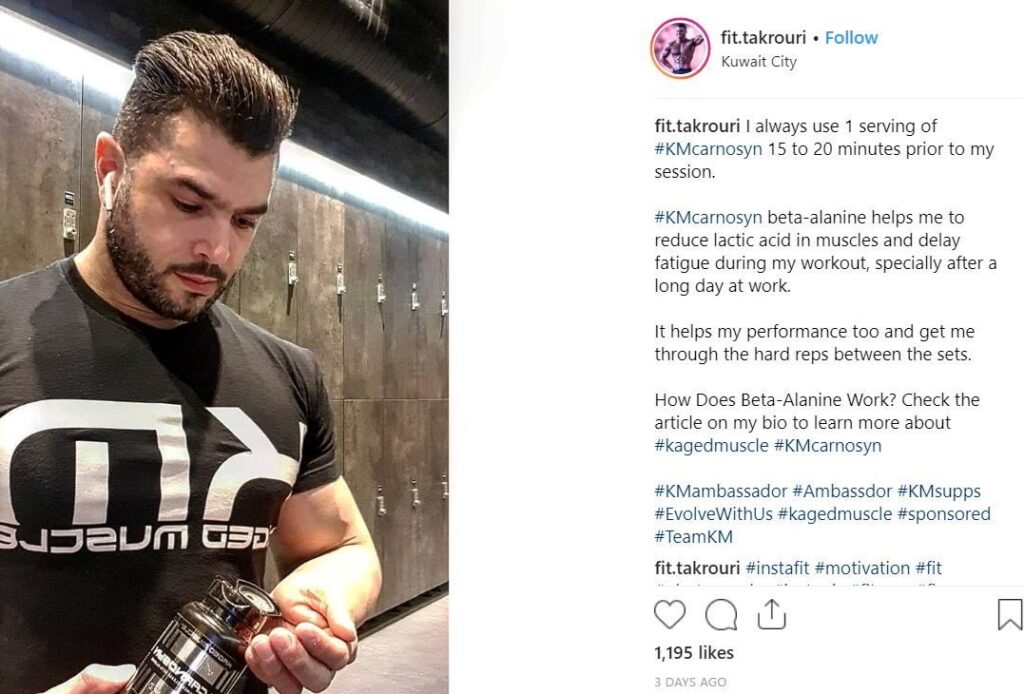
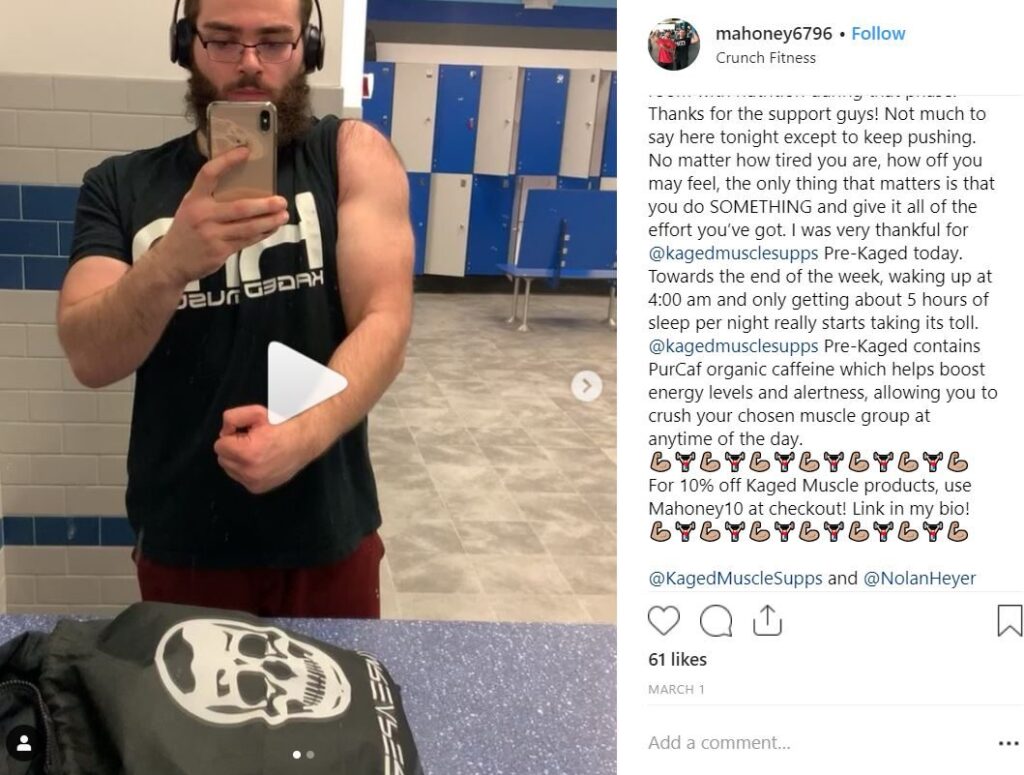
Examples of Great Apparel UGC
“Show us your #skirtjump! Who knows why jump shots became so popular, but honestly no one does a jump shot better than a Skirt Ambassador! Make sure you’re wearing Skirt Sports in your shot. Jump at your own risk as we will not be responsible for your jump fails and please do not get injured or take a risk just to take a good shot!”
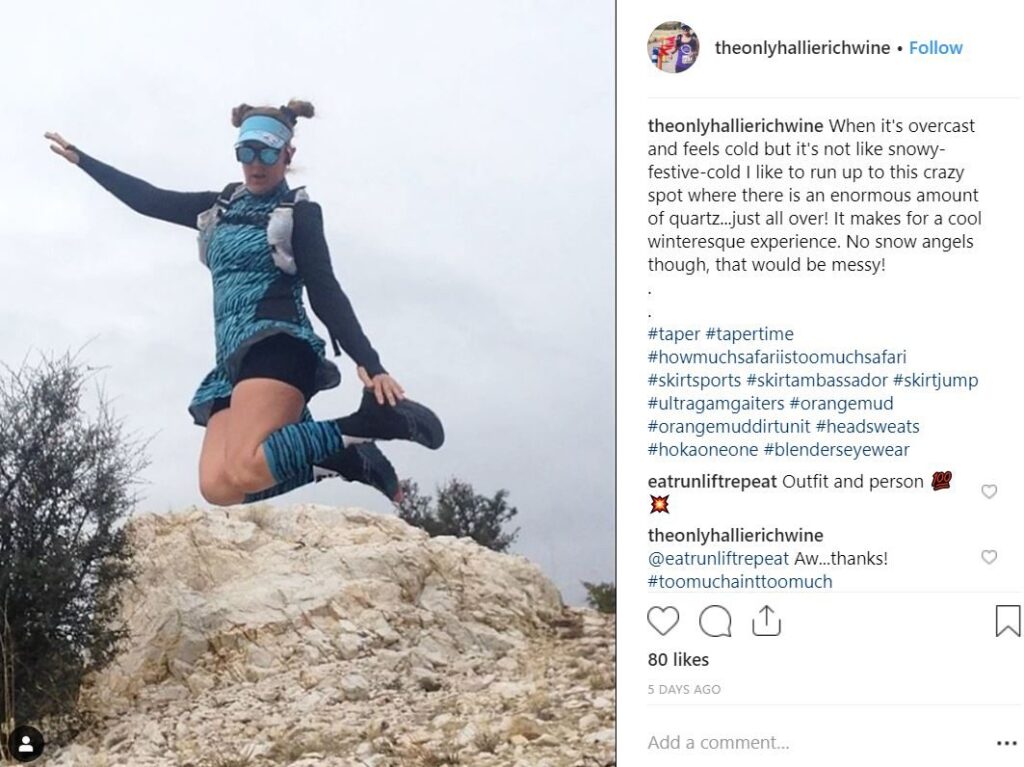
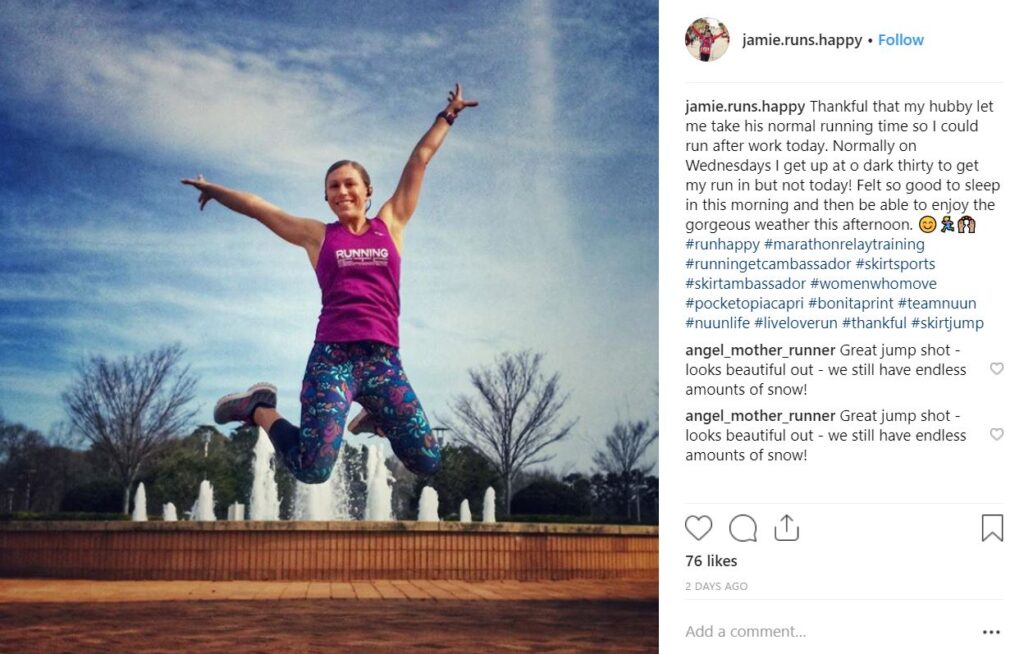
“Not everybody wants a theme or direction, just a post of whatever they are doing in Skirt Sports (well almost anything!). Show us your Skirt Sports and that’s that!”
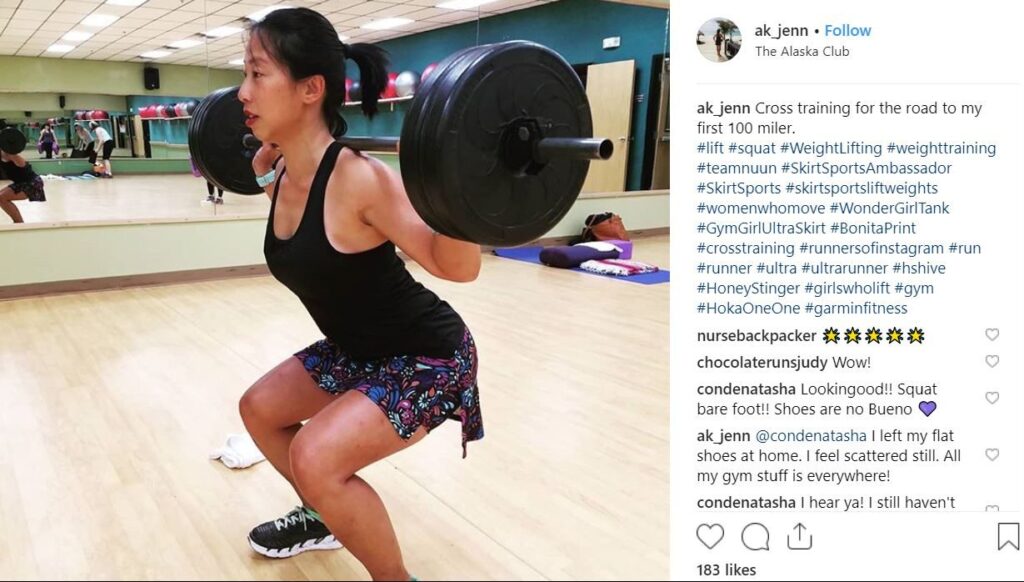
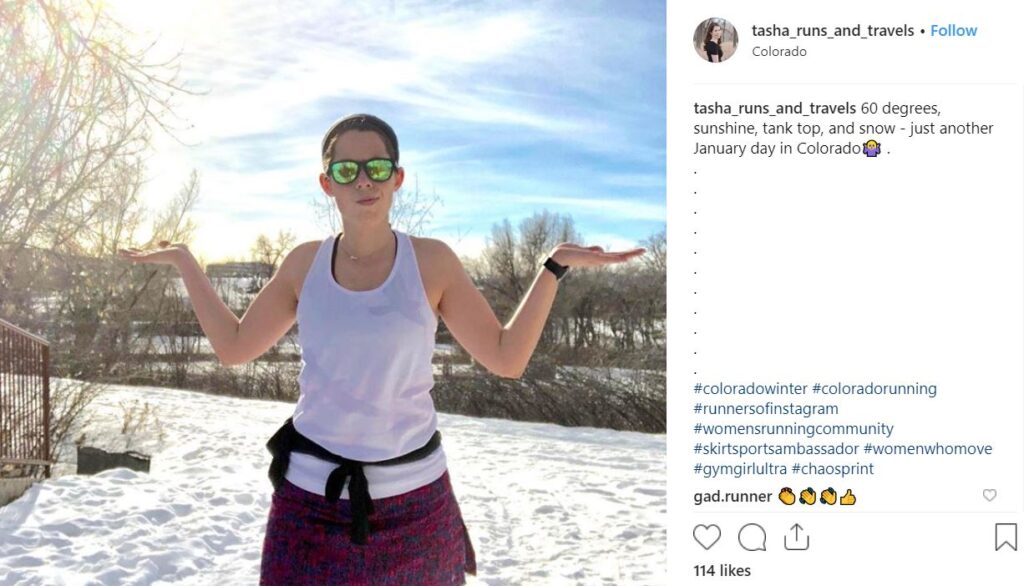
“It’s so much fun to share your passion for health and fitness with the ones you love whether it be in the gym, on the road, on a trail or on a yoga mat. Get your 2 legged and 4 legged family members and get moving!”
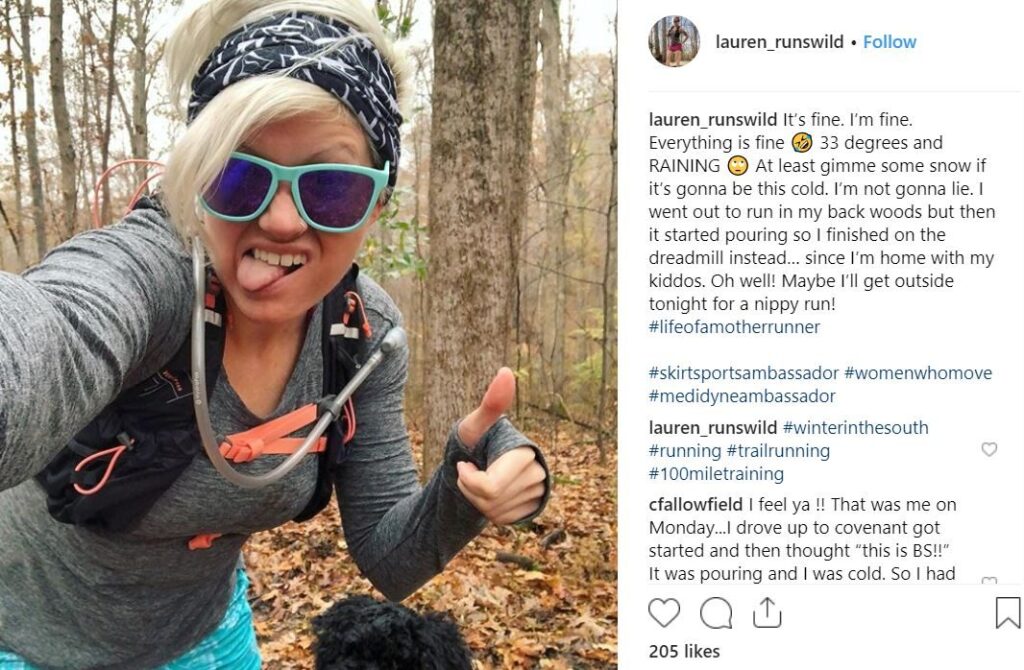
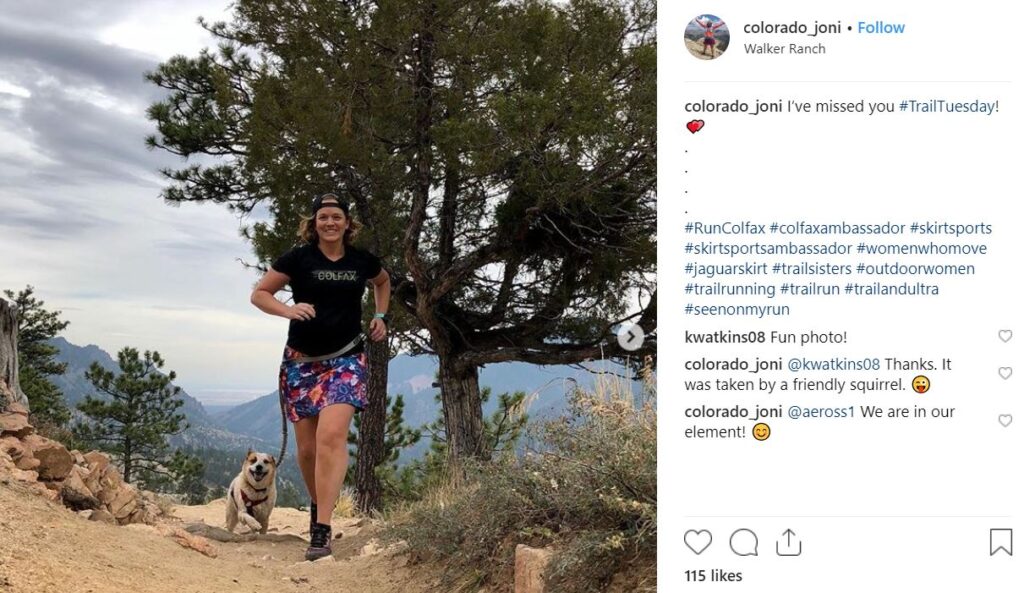
One Time Ambassador Activities Templates
Build one time activities around holidays, sales, and new product launches.
“1- Share the Valentine’s Day sale with your following!
2- Post an image of you in Skirt Sports sharing the sale OR use on of the provided images on the SSA FB group for the sale which you can use as is or we prefer if you swap out the pic of Nicole and put your own image in there!
3- Link to the sale: https://www.skirtsports.com/product-category/valentines-sale/
4- Hashtag #skirtambassador #Valentinesdaysale #skirtsports (and whatever else you’d like!). This is important for IG and Twitter not so much FB.”
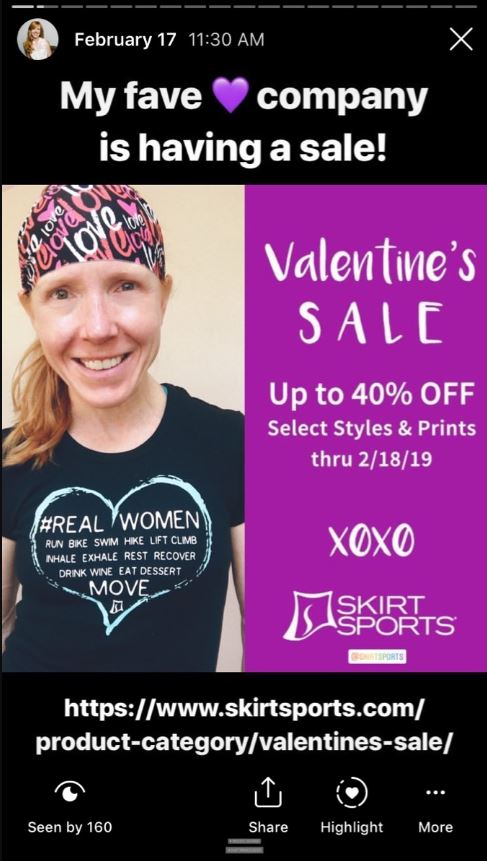
“- Share the sale on the sale page!
– With code SAVE20 you and your following can save 20% off already reduced prices!
– You can use the provided images or substiture your own pics! Sale runs through March 19th, cannot be combined with other discount codes or coupons.
– As an extra bonus, add your Sale Page referral link to your post!”
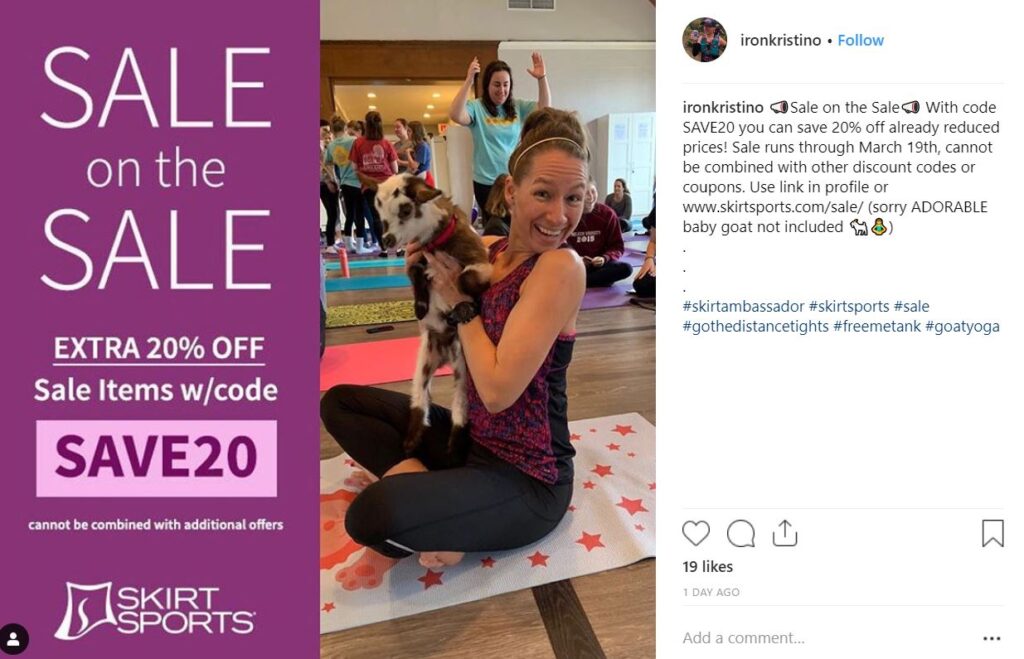
“We are launching our St. Patrick’s day tee a little earlier this year so that it can be worn for the day. Please choose one of the images in the link below to share on your Instagram feed or story. Thanks, Team! “
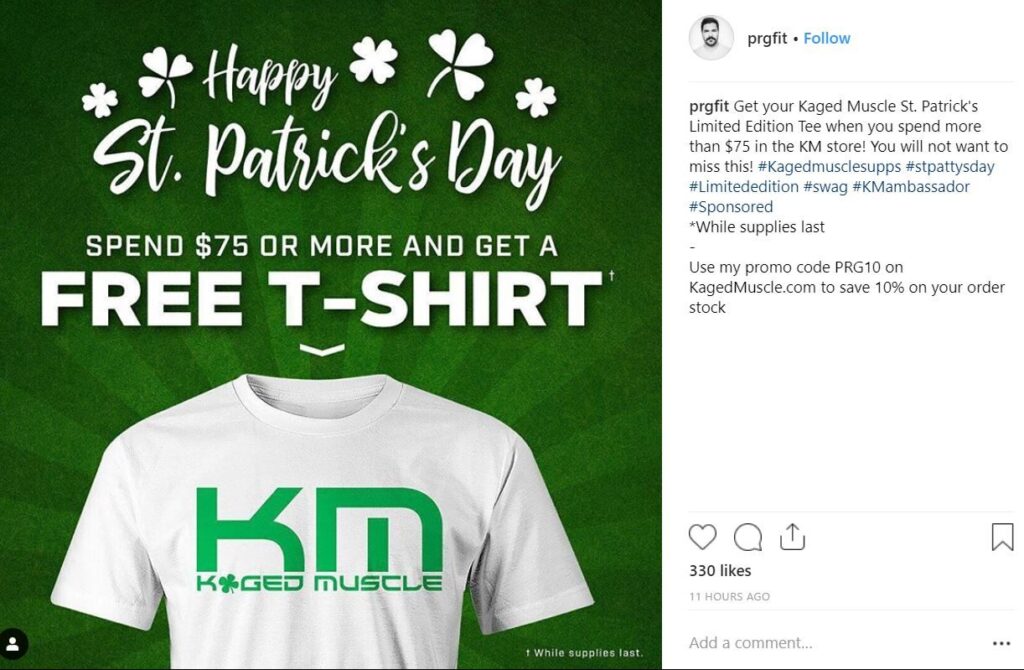
Generate Reviews On 3rd Party Marketplaces
E-commerce brands are increasingly selling through third party platforms with their own built in audiences. Reviews from verified customers that have purchased the product are necessary for creating trust, generating sales and creating a high performing sales channel.
Earlier in this article we spoke about the power of generating reviews on 3rd party distribution platforms. In this section we are going to give you the exact templates brands are using to generate massive amounts of online reviews.
Below is a template to successfully launch on new 3rd party distribution platforms to hit the ground running, and turn these channels into meaningful revenue numbers for your brand. Remember, you can’t reward or incentivize reviews, it has to be a favor based on the strength of your relationship with your ambassadors.
“Go to marketplace.com and search for “product”, click “Brand Product” and purchase. Once you receive your product leave a review with photos. Your review should talk about the benefits of the product and integrated into one or more of the following review types:
-How it makes you feel
-Other products you’ve tried
-The effects it’s had on your workouts
-Your increase in strength or decrease in weight”
Ambassador Program Rewards Templates
Bad rewards are another program killer. Even the best positioned brands to generate massive amounts of revenue through ambassador programs can kill their program with bad rewards. A good rule of thumb is to create rewards you yourself would be interested in working towards.
Bad rewards fall in two buckets:
- Rewarding ambassadors only on tracked referral sales
- Too much effort for the reward
Rewards that require too much effort violate the “Create rewards you yourself would be interested in working towards” rule.
Examples of Great Ambassador Rewards
The best rewards create additional value for your brand. And two fantastic types of rewards to create massive brand value outside of measurable referral sales and more brand awareness are rewards that contribute to the success of your brand in other areas:
- Increase AOV or purchase frequency
- Give steep discounts on old inventory to make space for new inventory
- Give steep discounts on new products, styles or seasons to get your ambassadors talking about and promoting your new launches
Examples Of Poor Performing Rewards
The worst performing rewards require too much effort from participants for the value of the reward being offered.
One of the worst performing ambassador programs we saw was a brand that required their ambassadors to complete 6 weeks worth of activities for a $5 branded water bottle.
Offering bad rewards makes your ambassadors feel undervalued and negatively impacts their relationship with your brand.








